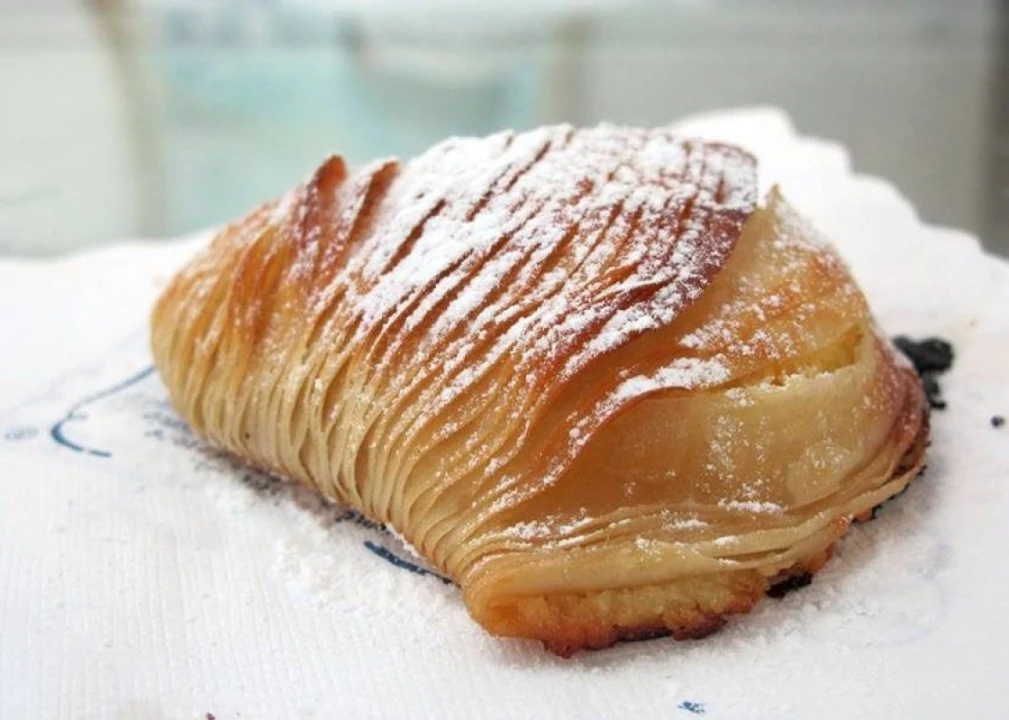Live Coffee Chat at Casa Belvedere: Naples Culinary Tour. Saturday, June 13th • 10:00am EST. Register Here. Take a virtual Naples culinary tour! From the signature local pastry, sfogliatella, to iconic street foods, this is a full feast of Naples’ best bites in the picturesque old market streets of the city, among the locals. Photographer Anita Sanseverino will “walk” us through this virtual tour of the streets of Naples though her vivid photographs.
Many Italians – especially older people who grew up in farming regions – know the cuisine as simply cucina povera, poor peasant’s cooking. Ironically, Neapolitan cuisine is now recommended by many doctors because it’s a heart-healthy diet that focuses on olive oil, fresh fruits and vegetables, beans and other legumes. (In comparison, food in northern Italy is rich with butter-based cream sauces, sausages and cured meats, and rich cheeses.)
Here is a short list of some legendary Neapolitan specialties
Neapolitan pizza has its origins in a simple flatbread sold on the street in 16th century Naples. Toppings followed, and legend has it that a pizzaiolo (pizzamaker) created a special one for Queen Margherita of Savoy, with tomatoes, mozzarella and basil representing the colors of Italy. Today, the margherita pizza remains a classic amidst a wide range of specialty pizzas, and Naples remains one of the best places to get pizza. It’s also home to Antica Pizzeria Port’Alba, believed to be the world’s first pizzeria. Modern-day Neapolitan pizzerias have custom ovens that cook at extremely high temperatures, which means your pizza can be served in less than two minutes.
Tomatoes also became popular around the world in large part because the industry of preserving tomatoes originated in Naples in the 19th century. The famous San Marzano tomatoes – strongly flavored, sweet, and less acidic – come from the small town of San Marzano sul Sarno, near Naples, and were first grown in volcanic soil near Mount Vesuvius.
Buffalo mozzarella, or mozzarella di bufala, is made from the milk of Mediterranean water buffalo. The fresh mozzarella is separated from the curd, stretched and formed into balls, with a creamy center.
Pasta alla Genovese, one of the oldest known pasta specialties, dates back to the 15th century. Historians believe Genovese immigrants brought the dish to Naples, hence its name, and it remains a Neapolitan tradition. It is made with either beef or veal sautéed with lots of sliced onions, then simmered for hours until the mixture reduces to a thick, rich sauce.
Cuoppo is a famous Neapolitan street food – a paper cone filled with perfectly fried treats. It may contain seafood, meat, savory or sweet items – or a mixture.
Spaghetti alla Puttanesca is more recent, believed to be created by a restaurateur in the 1950s. He assembled a dinner for late-night customers using what was left in the kitchen: some tomatoes, anchovies, olives, garlic and capers. According to lore, they told him to “facci una puttanata gualsiasi” – throw together whatever. Because puttanata is similar to puttana – the Italian word for prostitute – it started another theory that the dish was created in one of the many bordellos in Quartieri Spagnoli.
Several pasta dishes of the poor are among the most famous and cherished among Italians, including Pasta e Fagioli (pasta with beans) and Pasta e Ceci (pasta with chick peas). The pasta is traditionally cooked with the beans and vegetables to make the sauce thicker.
Sfogliatelle is a much-loved Neapolitan pastry that translates to “little leaves,’ referencing the many thin, crispy layers of flaky pastry in the shape of a seashell. There are several variations, but the most common has a rich ricotta and semolina filling, with a hint of candied fruit and a dusting of powdered sugar.
Struffoli are small deep-fried dough balls, each no bigger than a marble. The crunchy treats are coated with honey while warm, sprinkled with colorful nonpareils, then piled into a mound for a deliciously messy sweet treat, especially popular for holidays.



